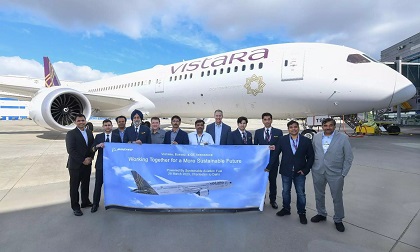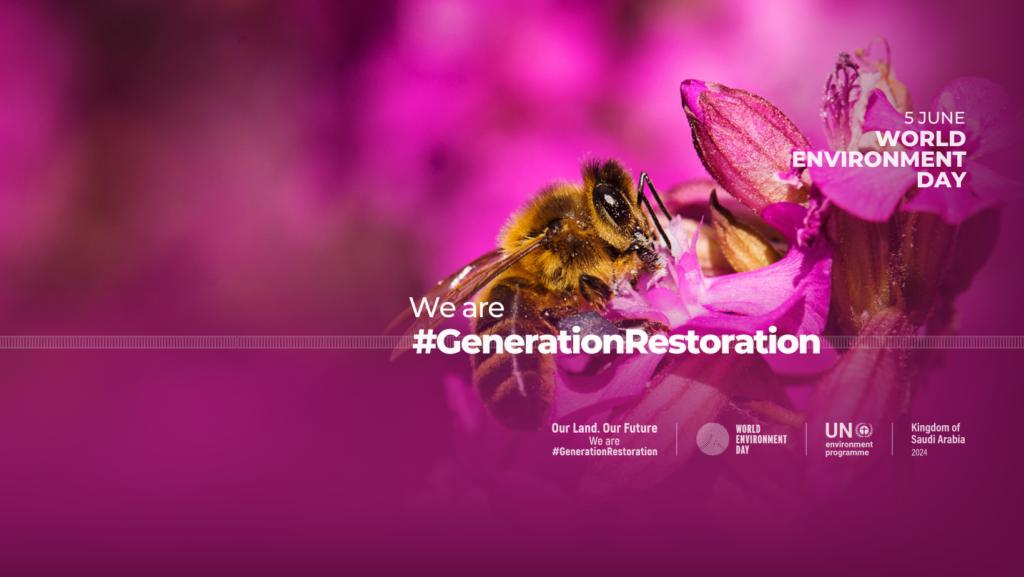On June 5th, as the world observes World Environment Day, India’s aviation sector strides purposefully towards sustainability, aligning with global commitments to combat climate change. The International Air Transport Association (IATA) is leading this charge, which has ambitiously set the target for airlines worldwide to achieve net-zero carbon emissions by 2050 under its Fly Net Zero initiative.
The commitment made by IATA member airlines at the 77th IATA Annual General Meeting in 2021 marks a pivotal step towards aligning air transport with the goals of the Paris Agreement. Achieving this ambitious target necessitates collaborative efforts from airlines, airports, air navigation service providers, manufacturers, and governments.
In India, airlines are actively implementing measures to reduce carbon emissions and promote sustainability in aviation operations. Recent headlines have highlighted AirAsia India and Vistara’s milestone achievements in conducting commercial flights using sustainable aviation fuel (SAF), showcasing significant progress in the country’s journey towards greener aviation.
While these initiatives merit recognition, the pursuit of sustainability transcends mere fuel choices. Airlines like Akasa Air are adopting holistic strategies, incorporating biodegradable products and efficient waste management practices to minimize environmental impact. IndiGo’s transparent disclosure of its Environmental, Social, and Governance (ESG) report sets a commendable standard for industry-wide accountability.


Budget airlines, predominant in India’s aviation market, are embracing innovative approaches to waste reduction, such as introducing buy-on-board options and eliminating single-use plastics. Furthermore, the industry’s commitment to sustainability is underscored by efforts to renew fleets with fuel-efficient aircraft and optimize airport infrastructure for energy efficiency.
India’s airports are also pivotal contributors to sustainability efforts, with initiatives ranging from solar energy harnessing to zero-waste practices. Kochi and Bengaluru airports have set remarkable examples by becoming solar-powered and achieving substantial energy savings through green building initiatives.
Moreover, the adoption of electric vehicles for ground operations at airports, particularly in Delhi and Mumbai, highlights the industry’s transition towards cleaner energy sources.
As the aviation sector embraces sustainable practices, stakeholders acknowledge the crucial role of Sustainable Aviation Fuel (SAF) in reducing carbon emissions. SAF, capable of reducing CO2 emissions by up to 80%, holds promise as a viable alternative to traditional jet fuels. However, scaling up SAF production necessitates concerted efforts from governments, fuel producers, and airlines.


Looking ahead, achieving net-zero emissions by 2050 requires sustained collaboration and innovation within the aviation industry. From investing in renewable energy sources to advancing fuel-efficient technologies, stakeholders must remain resolute in their pursuit of environmental sustainability.
On this World Environment Day, as the global community reflects on the urgent need for climate action, India’s aviation sector stands ready to lead the charge towards a greener, more sustainable future. By embracing innovation, collaboration, and responsible practices, Indian aviation is making significant strides towards mitigating its environmental impact and contributing to a healthier planet for future generations.
In the realm of global aviation, the thrill of traversing vast distances is shadowed by the daunting reality of a growing carbon footprint. As India propels its economy forward, its aviation sector mirrors this global concern, contributing to the carbon trail etched across the skies. Over the past two decades, emissions from international aviation have surged by nearly 130%, igniting concerns among climate advocates. Despite strides in fuel efficiency, projections paint a grim picture, forecasting a 7 to 10-fold increase in aviation emissions by 2050 compared to 1990. This pressing reality underscores the imperative for collaborative international efforts to mitigate aviation’s carbon emissions.
Against this backdrop, the Carbon Offsetting and Reduction Scheme for International Aviation (CORSIA) emerges as a pivotal endeavour orchestrated by the International Civil Aviation Organization (ICAO). CORSIA, designed as a global market-based measure, aims to stabilize CO2 emissions at 2020 levels by mandating airlines to offset their emissions growth post-2020. CORSIA has garnered participation from 126 States through Execution in phases – a pilot phase (2021-2023), a voluntary phase (2024-2026), and a mandatory phase from 2027 onwards, signaling a collective resolve within the global aviation community.
Initially, India’s stance towards CORSIA was cautious, reflecting a narrative of balancing the rapid growth of its aviation sector with its global environmental responsibilities. Concerns lingered regarding the scheme’s alignment with the United Nations Framework Convention on Climate Change (UNFCCC) principles, particularly the notion of “common but differentiated responsibilities.” This principle, recognizing varying emission capacities among nations, seemed at odds with CORSIA’s standardized compliance requirements.


Moreover, the financial implications of CORSIA raised eyebrows, with offsetting requirements potentially burdening India’s aviation sector – a vital engine for economic development and connectivity. However, India’s narrative towards CORSIA gradually evolved, mirroring its growing engagement in global climate dialogues. A pivotal moment came with the recent announcement by Minister of Civil Aviation, Jyotiraditya Scindia, regarding India’s decision to participate in CORSIA and the Long-Term Aspirational Goals (LTAG) from 2027 onwards.
This phased engagement strategy aims to grant airlines from developing States like India ample time to thrive, mitigating potential adverse financial impacts from CORSIA. By aligning with CORSIA’s mandatory phase, India positions itself within the global endeavour to curb aviation emissions while allowing its aviation sector to strengthen its capacities.
This decision embodies a balanced approach, demonstrating India’s commitment to global climate goals while safeguarding domestic interests. The participatory stance taken in 2027 aligns with the overarching goal of ensuring that the financial implications of CORSIA do not obstruct the growth trajectory of India’s aviation sector
India’s journey towards sustainable aviation extends beyond CORSIA, intertwining national policies with global initiatives. Domestically, the National Policy on Biofuels, 2018, marked a significant stride towards decarbonizing the aviation sector. Spearheaded by the Ministry of Petroleum and Natural Gas (MoPNG), this policy laid the groundwork for India’s Bio-Aviation Turbine Fuel (ATF) Programme, promoting clean fuel usage in aviation.
Furthermore, Indian carriers like SpiceJet, IndiGo, and Vistara are actively exploring Sustainable Aviation Fuel (SAF) initiatives, conducting demonstration flights with SAF blends. India’s active involvement in ICAO’s Sustainable Aviation Fuels Programme underscores its global commitment to knowledge exchange and capacity building for transitioning to sustainable aviation fuels (SAF).


Regulatory alignment with ICAO guidelines for environmental protection within Civil Aviation Regulations (CARs) and efforts towards carbon neutrality by the Directorate General of Civil Aviation (DGCA) and the Airports Authority of India (AAI) signify India’s comprehensive approach to environmental stewardship.
As India’s aviation infrastructure expands, dedication to sustainable practices remains steadfast. Initiatives like the Airport Carbon Accreditation programme and Cochin International Airport’s solar-powered operations epitomize India’s commitment to green aviation.
In conclusion, India’s journey towards aviation sustainability epitomizes a harmonious blend of national aspirations and global responsibilities. From initial hesitation to structured engagement, India’s narrative reflects a measured approach to navigating the complex terrain of aviation sustainability amidst economic growth aspirations. Through a balanced strategy, India establishes a blueprint for simultaneous economic growth and environmental stewardship, fostering a more eco-conscious future for the aviation sector.
by Ravisankar K.V
Also Read
Tourism Poised to Smash Records in 2024
Watch on Youtube
